On the second to last day in June, Arizona Gov. Doug Ducey took to the rostrum.
The state had issued a stay-home order earlier in the year to combat the coronavirus pandemic, then lifted it in a return to normal. Now, Ducey, after removing the mask he wore into the room, was ready to decree a new round of closures: No bars, no gyms, no gatherings of more than 50 people.
The state, he said, would do “whatever is necessary to protect the lives and livelihoods of Arizonans."
His new order was fraught with controversy, even by 2020 standards. Ducey had just days earlier appeared, unmasked, with President Donald Trump, who held a campaign rally for thousands of supporters packed in close quarters at a Phoenix church. Ultimately, Secret Service agents and the girlfriend of the president’s son would test positive for the virus – as would thousands of Arizonans every day, a march of illnesses and death that seemed ever-increasing.
Even as cases rose, photos and videos from Arizona had ricocheted across social media and cable news showing people at the Salt River and at Scottsdale bars, standing shoulder to shoulder, unmasked and apparently indifferent to the pandemic threat.
Ducey’s new order still would not impose a mask-wearing rule statewide. Public health, he said, was reliant on the people of Arizona.
Still, he said, the actions of a few dictated a need to "pump the brakes."
"Arizonans have been, by and large, terrific, fantastic and responsible," he said, "But we have found some situations in categories where we need to take more aggressive actions, and that's what we're going to do today."
By the next morning, the last day in June, some gyms would have their doors locked, while others would stay open and one owner would even file suit over the order, remaining openly defiant of the latest health measures. Other business owners would ready for work facing challenges they had never dreamed of before 2020.
That morning, even as cities across the state stepped in with their own mask mandates, a Scottsdale city councilman who had drawn national scorn for shouting “I can’t breathe” as an anti-mask protest would announce he would not submit to pressure to resign.
That morning, a line of cars would spill out onto the street outside a health center near Yuma. It would be the latest in a seemingly endless string of crowded test sites that would net ever-more confirmed cases of the virus.
That morning, a doctor in a hospital ward, her N-95 mask strapped down tight, would be examining patients who flip onto their stomachs to breathe. But she would worry about one special patient who can’t be rolled over.
That morning, that Tuesday, would bring the first full day of the new, limited shut-down order. It would bring a visit from a top federal health official to respond to the pandemic. It would see Arizona prepare for a visit from the vice president.
By the last day in June, Arizona had been critiqued for not preparing early, blasted for shutting down too late, protested for not reopening, ridiculed for reopening too soon and then skewered for closing again.
On that day, a day when Arizona would record 2,821 new cases and 23 deaths, it seemed the only thing more difficult than predicting what the pandemic would do to Arizona was figuring out what Arizonans should – or would – do to stop it.
Medicine
On Tuesday morning, Phoenix ICU nurse Brittany Schilling was already deep into her shift as a charge nurse. She oversees a unit of 22 patients. That morning, most of them were ages 20-45.
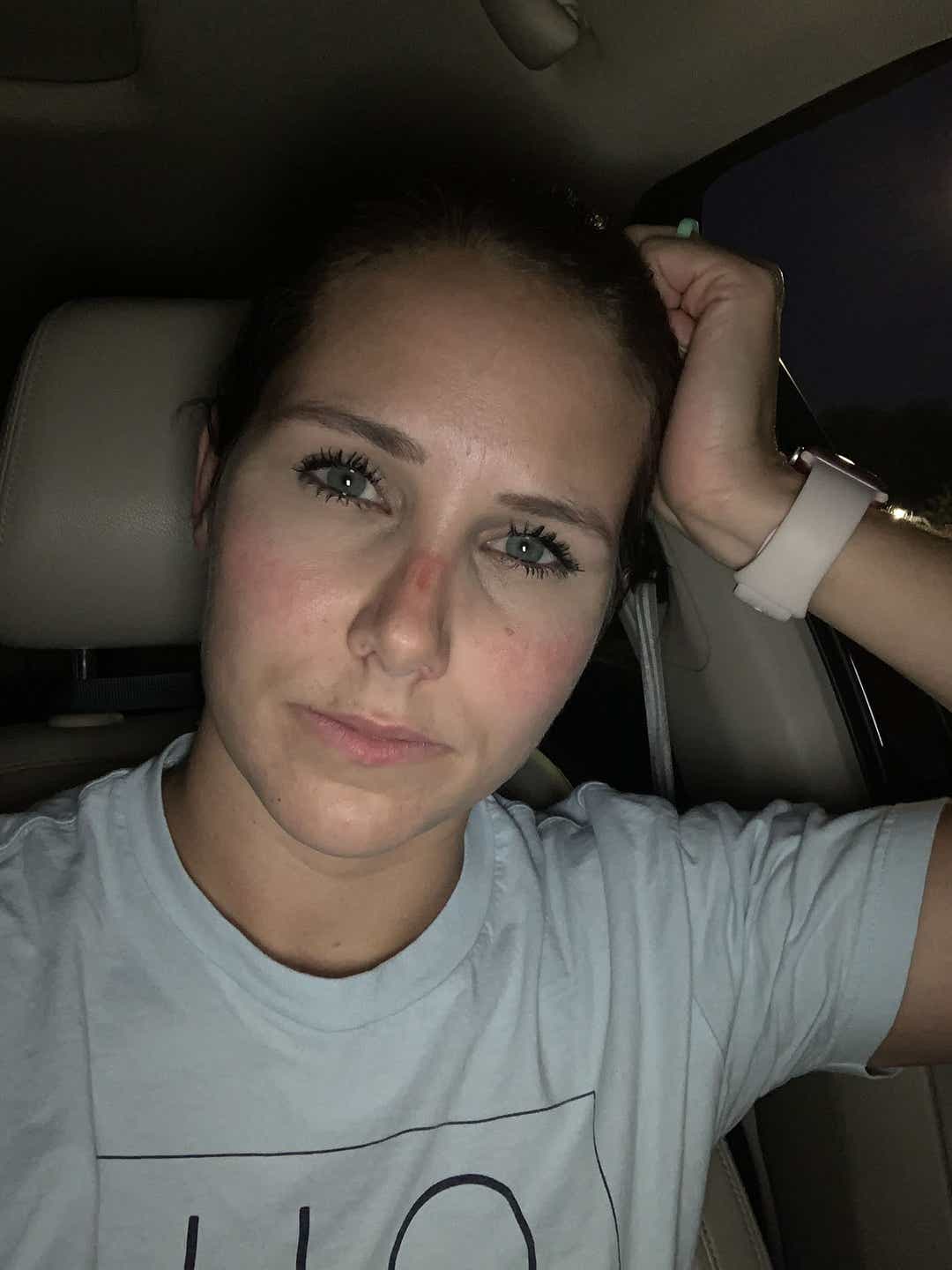
She’s supposed to start at 7, but she was in by 6:30. She’s been adding extra shifts because the hospital is low on nurses. She works in a major Phoenix hospital but does not want to identify which one. They’re also low on beds, with more patients waiting in the emergency department for an ICU bed to open up.
"We've been doing this for over three months now,” she said. “Myself, and I can see in my staff, we're very tired. Emotionally it weighs very heavy on us as well. We're exhausted."
In the spring, medical workers had been celebrated as heroes. Cities held impromptu parades at shift change. In Phoenix and across the country, military bases scrambled jet flyovers to honor doctors and nurses. The nation was at war with a deadly enemy, and the workers were on the front lines. By the last day of June, that army was worn down, and some wondered if the nation had forgotten them.
…
Geoff Comp should have been on his way to work as an attending physician at Valleywise Health Medical Center. But he had the day off. So instead of going to the hospital, he went for a run, then took his wife to the doctor for an ultrasound. They saw “the little faces and little toes” of their twins for the first time. He wonders what kind of world they’ll inherit.
“I think today and most days I have a pretty significant sadness and a lot of frustration,” he said. He wishes the people crowding into bars and floating on the river could see what he’s seen at the hospital. “If they could see the sadness, see the worry. This isn’t hyperbole, this is reality.”
Phoenix fire Capt. Mike Adelman and his crew were sanitizing two fire trucks and an ambulance at Fire Station No. 18. It’s the busiest station in the state.
A lot of calls are from people having shortness of breath, he said. Any crew that goes to a scene goes with gloves, masks and eye protection. But Adelman sees some of the younger members still have concerns because they have young children at home. He knows the stress doesn’t just affect his crew. It affects everybody in the city.
"They don't know what their future is going to be like. And they're under a lot of stress, financial and emotional stress," he said. "So we see a lot of the increase in anxiety. And that anxiety produces stress. That stress produces physical ailments. And then they call us."
…
Kari Curry runs a senior community in Litchfield Park. These days she sometimes runs it from her backyard. She starts work with a daily conference call with a dozen employees at La Loma Village. At the end of June, she was worrying over two shipments of PPE received from the Federal Emergency Management Agency. Some other nursing homes have reported receiving expired masks, ill-fitting gowns or gloves too small for adults.
So far, two of her employees have tested positive, and others worry constantly that they will contract the virus and bring it with them to work, infecting residents. “We’re tired,” she said. “This has been a long fight. But we’re telling our employees, ‘Now is not the time to slow down or to lift any precautions.” In Maricopa County, more than 350 long-term care facilities have reported at least one case of COVID-19, and their residents account for 52% of the county’s total COVID-19 deaths.
She got an update: La Loma received from FEMA 40 boxes of gloves, 850 masks, about 900 gowns and nearly 70 face shields. The news was good. The PPE was good quality. Nothing was expired. She put it to use right away.
…
At 8 a.m., Dr. Mandeep Rai put on a new robe and gloves. Her N-95 mask and goggles are always on. Then she stepped into a patient’s room at Abrazo Arrowhead Hospital in Glendale. It’s a patient she’s been thinking of a lot. She had been hoping today would be the day: Maybe she’ll be sitting up in a chair. Maybe she’ll be using less oxygen.
But inside, the woman was still on her back, oxygen mask flowing.
Often, Rai will advise COVID-19 patients to lie on their stomach, because that positioning allows more oxygen to get to their lungs.
This patient couldn’t. She was 31 weeks pregnant.
She was one of 20 COVID-19 patients Rai would see that Tuesday.
Rai does rounds at Abrazo and another hospital in Glendale. An infectious disease specialist for 20 years, she has never seen anything like this pandemic.
“I have never been so emotionally challenged by the work,” Rai said. “It’s fatiguing, and heartbreaking.”
Rai has been doing her job long enough to maintain her composure. But this virus is throwing her curveballs.
“We lost an employee,” she said. “That hit me hard.”
Rai said she doesn’t worry as much about her health as she worries about exposing her family to the virus. She lives with her husband and her 87-year-old mother-in-law.
At night, the family eats dinner together – but outside. It makes them feel safer.
She wants people to wear masks. She wants them to stay a safe distance from others. She watches as the number of young people with the virus increase.
“I sometimes feel like shaking the younger people and saying, ‘You guys, wake up,’” she said.
In her pregnant patient’s room, Rai tries to be reassuring. She tells the woman to try to lie on her side, or walk around the room, or take a deep breath. The woman is always so positive, she said.
“She will smile and say, ‘I’m doing OK,’” Rai said. “’The baby is kicking well.’”
Testing
Frank Levandowski woke up in his Phoenix condo exhausted. The nurse practitioner works 12-hour shifts doing coronavirus testing at Alliance Urgent Care in Phoenix. The day before, he saw 48 patients, more than half of whom were there for COVID-19 testing or symptoms. He did every test himself. “Why expose other staff?” he said.
In the war against an enemy virus, the question of testing has sometimes turned the battle into one about information. How many people are really sick, or at risk, became an ever-shifting target. In May, Arizona ranked 50th out of 50 states in per-capita testing. In June things had improved but not by much. A line nearly 1,000 people long waited up to 13 hours in the heat at one testing site in Maryvale. Testing frustrates clinicians and patients alike.
…
In early June, Robert Rezetko had gone to an urgent care in Tucson that advertised rapid COVID-19 testing. Three weeks later, on the last day of June, he was still awaiting his results.
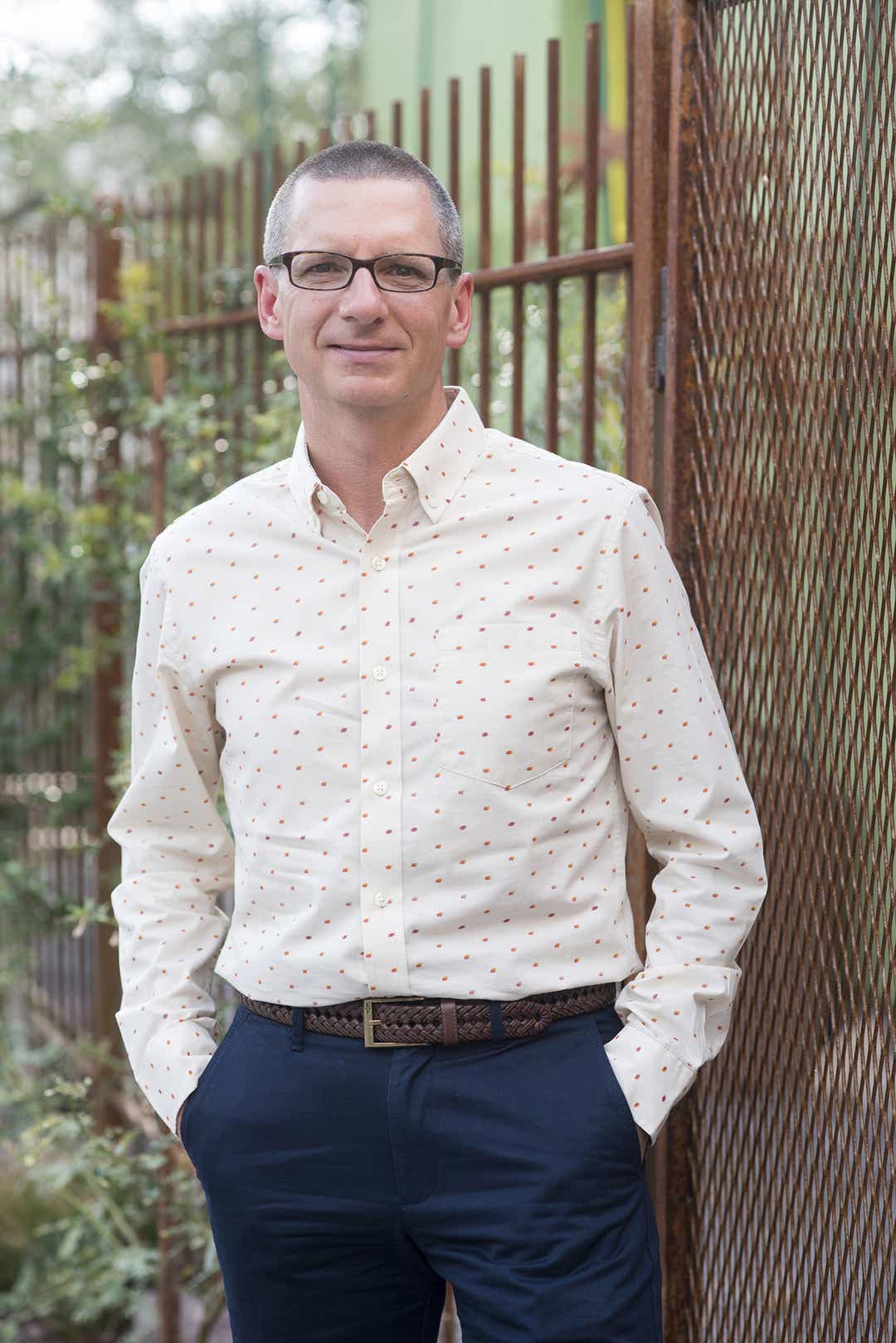
Rezetko’s family started quarantining in mid-March. He worked from home and went out sparingly – a UPS store visit here, a bakery there – always wearing a mask. He went to a busy grocery store where few were masked in early June. Shortly after that, he started feeling sick, with a headache, body aches and a sore throat.
Rezetko moved into his casita, which he uses as an office, away from his wife and kids, because he wasn’t sure if he had it and wanted to be as safe as possible.
“If I didn't have COVID, and I've been waiting all this time and went through all this when we could have known," he said, “I'm going to still feel frustrated and mad, angry at the system and how it failed."
…
At New Life Health Care in Chandler, a four-woman team gathered around an unopened box of Bosa donuts, wearing gowns, gloves, hair nets, face masks and face shields. The first patient of the day would be there by 7:45 a.m. Elizabeth Andrews, New Life Health Center’s CEO, had planned to bring a roast she made for the group to eat but forgot it on the way out of the door that morning. They would have to eat the vegetables and rice that were already in the refrigerator instead.
The recent surge in cases was obvious to all the women in the practice. But it hasn’t come as a shock. Andrews said the rates of positive cases they were testing at their small family clinic when it opened in April made it clear what was coming.
Now, Andrews said she is prepared for at least another 18 months of dedicating most of their practice to COVID-19 testing.
“We had a conversation early on of what we're going to do,” she said. “Basically it’s ‘are you going to run away from the fire or run toward the fire?’ And we chose to run toward the fire.”
…
At about 10 a.m. on June 30, Ryan Zaragoza and his partner Theresa Clark waited in a long line of cars that wove around the Regional Center for Border Health in the small farming city of Somerton, just south of Yuma.
The cars spilled out onto Main Street — some days they lined up as far as a mile and a half away.
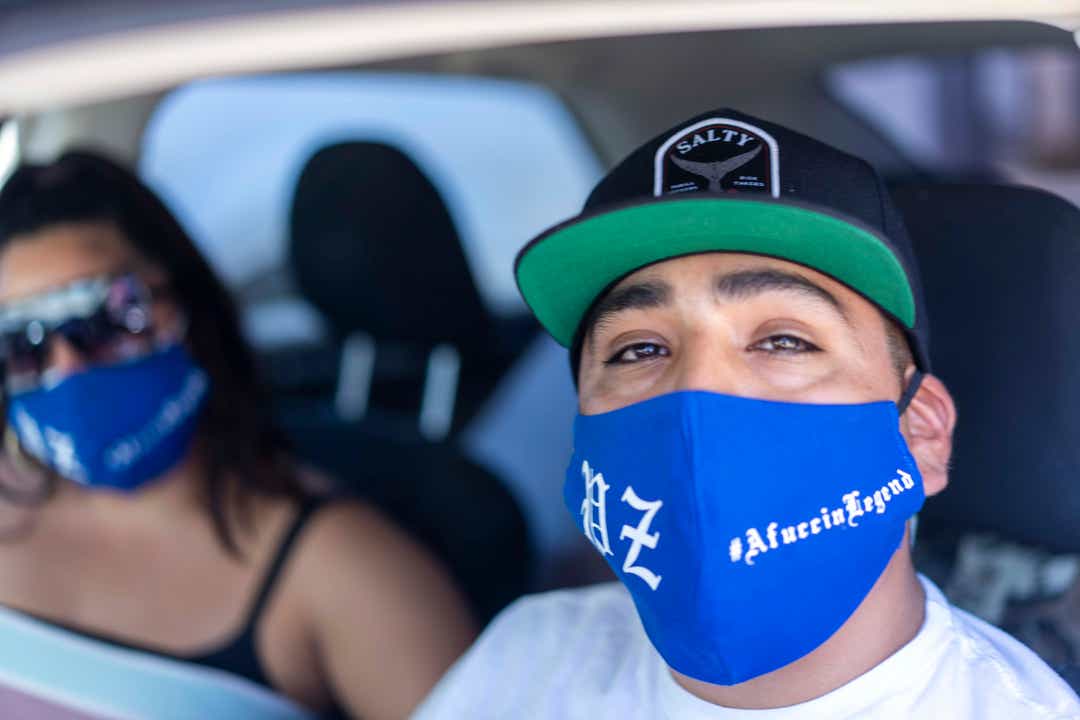
The Regional Center for Border Health had accounted for almost 90% of the county’s 35,000 tests as of June 30. An alarming number of them had come back positive.
With rapid spread of the virus in Yuma County, Zaragoza and Clark wear their masks religiously and, to the frustration of their four children, constantly require hand washing and sanitizer in their Yuma home.
COVID-19 has already struck deeply into their family — Zaragoza’s father died from it on June 9. “We never expected it. He was in good health. He was strong, he was tough,” Clark said. “But it has nothing to do with that. This is a deadly virus. And you don’t know who it could strike.”
Paul Zaragoza, Ryan’s father, turned 52 on June 1. About a week later, he became one of 94 people that had died from the virus in the Yuma area.
County health officials had confirmed 6,225 COVID-19 cases as of June 30, a sixfold increase compared with the previous month. Yuma has one of the highest infection rates in Arizona, and it’s showing no signs of slowing down.
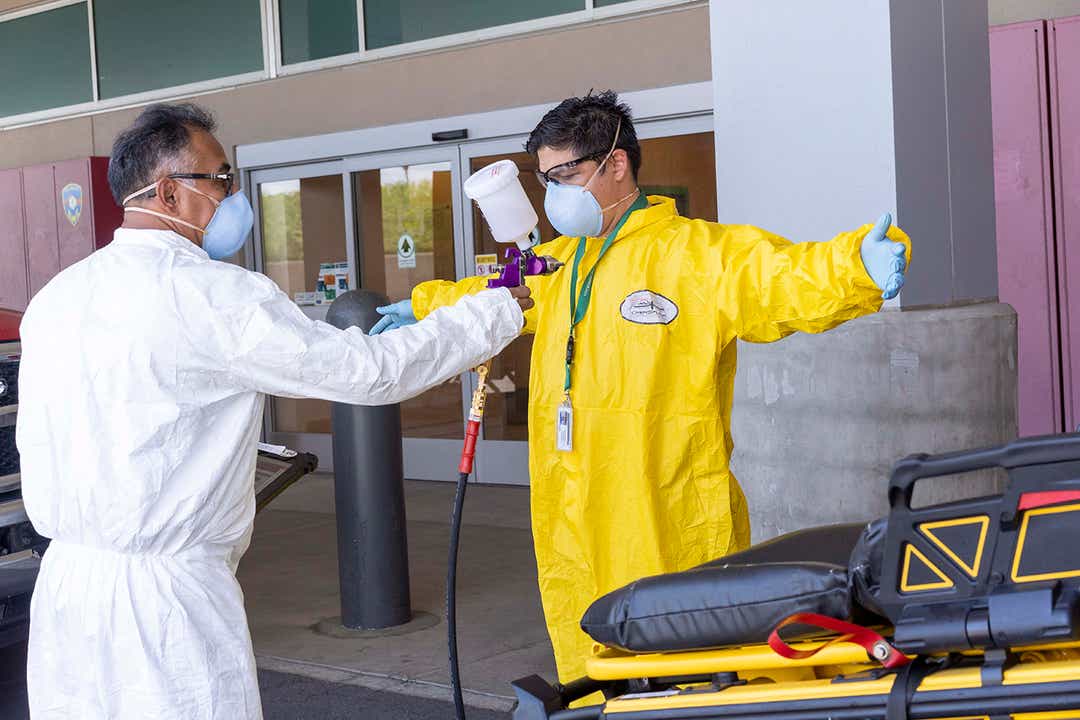
As they waited for their test, Ryan said he had spoken to his father on his birthday. A week later, he was experiencing shortness of breath. At 2 a.m. on Tuesday, June 9, his father died in his sleep.
Amanda Aguirre, CEO and president of the health center, attributes the rise in cases in Yuma to what she called the mixed messages coming from the state and the White House.
“I think it gave us a sense of security that it’s OK, that we’re going back to normal, when we’re not.”
After receiving their swabs, Ryan pulled over and the two exchanged their standard baby blue medical masks for navy blue masks with the letters PZ, for Paul Zaragoza, woven on one side, Ryan’s aunt had made them for his father’s funeral, where everyone was required to wear one.
“Ask anybody where I’m from, ask between either town, they know who Paul Z is,” Ryan said.
“So I’m just spreading that awareness,” Ryan continued, a finger to his mask. “And hopefully I can save somebody else’s life.”
Masks
At 6:30 in the morning, the bumpy trail leading up to Piestewa Peak was bustling. Shannon McCary walked alone at a steady pace, winding between sun and shadow. McCary is retired and living in Sun City. Getting outside, despite crowded overlooks and parking lots, is her way of coping with the virus. "I really think that people have got to live their lives," she said. "What are we going to do, just keep waiting and waiting and waiting?"
Her face mask, which she normally wears while shopping and spending time with her elderly mother, was tucked away in a shirt pocket. "I’m not a person that wants to live in fear," she said.
Arizona's culture war over face masks made national news on April 20, when an angry demonstrator carrying an American flag confronted a stoic healthcare worker named Lauren Leander during a protest at the Arizona State Capitol. But those who believe the decision to wear masks should be a matter of personal responsibility and not a government mandate are in keeping with Arizona’s longstanding streak of libertarianism. During the 1918-19 influenza outbreak, which killed an estimated 2,750 people in Arizona, the state issued a statewide mask order. It lasted four days.
…
By lunch time in Julie’s Sewing Corner and Quilt Shop in the historic mining town of Miami, owners Don and Julie Reiman couldn’t take a break. Don cut material into squares to run through a sewing machine to make face masks. At $5 each, they sell as fast as he can make them.
“No rest for the old people,” Don said. He’s 79 and his wife is 77.
On June 24, the Miami Town Council passed a proclamation mandating masks in public places. Yet Don, who’s on the town council, voted against it, even though his business would have benefited.
“I just don’t feel it’s the government’s place to enforce common sense,” Don said.
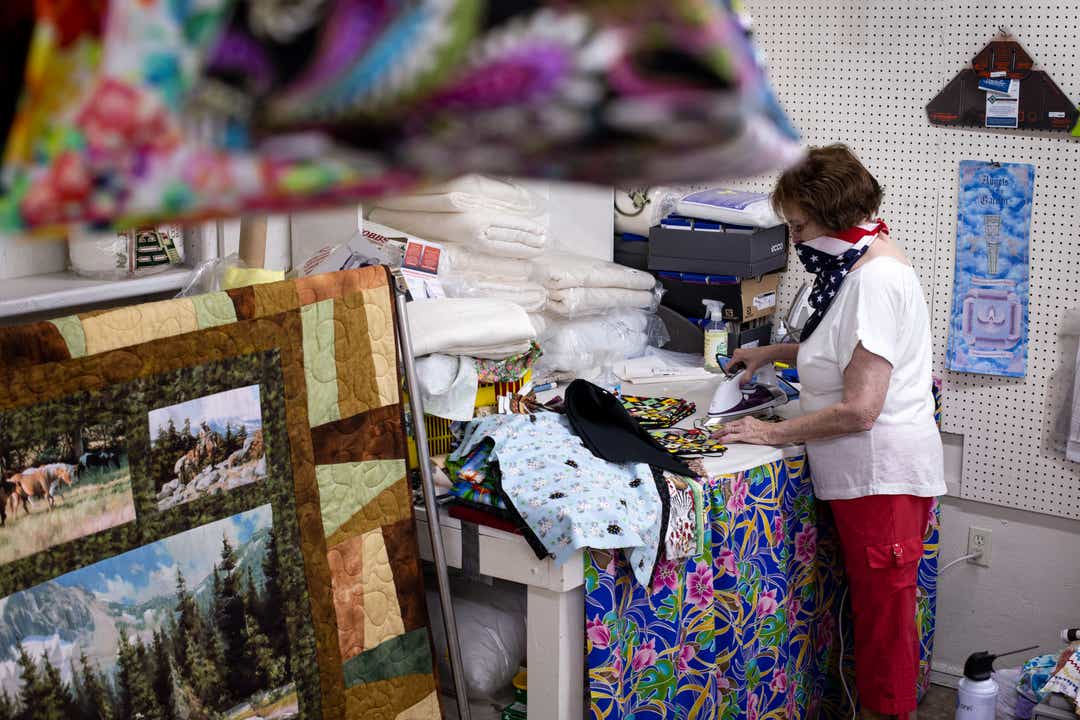
…
On Tuesday afternoon, Kim Wessinger was dusting down surfaces at Regency Mod, her apothecary shop in Scottsdale.
In May, when she opened her shop, which specializes in candles and perfumes, she worried that businesses in the area might not be able to survive the crisis.
Now she worries about Scottsdale’s – and Arizona’s – image in the eyes of the nation, particularly with so many scenes of unmasked people descending on the city's downtown and bar district.
Earlier that morning, Scottsdale City Councilman Guy Phillips held a press conference to say he wouldn’t resign after making national headlines when he twice shouted “I can’t breathe,” during a protest he was leading against mask requirements.
Those words were spoken by George Floyd moments before he died at the hands of Minneapolis police on May 25.
Phillips apologized to Floyd’s family after the rally. On Tuesday, he apologized again, but said he didn’t regret holding a protest against government mask mandates.
Phillips spoke just blocks from where vandals looted stores at Scottsdale Fashion Square in the early days of protests over Floyd's death and from where thousands marched peacefully a week later chanting, "I can't breathe."
Wessinger said the attention Phillips drew to Scottsdale was not what local businesses needed.
“You cannot go out there and market yourself as a voice for Scottsdale when that is not my voice,” Wessinger said. “Don’t take it there.”
…
At the Boys & Girls Clubs of the Valley, children had their temperature taken as parents dropped them off for the day. The kids use hand sanitizer every time they enter or leave a room and wash their hands before and after each meal. Staff wipes down hard surfaces and high-touch areas as the kids rotate from room to room.
It’s all part of the organization’s new normal, Cassidy Campana, the organization’s spokeswoman, said.
As the state implements new restrictions on gatherings and cities across metro Phoenix and Maricopa County mandate that residents wear masks in public, the organization is trying to adapt.
But getting kids to wear masks isn’t as easy.
“Kids are playing indoor sports and they break. We have kids with underlying health conditions that we don’t know about.”
…
Tony Jackson’s caregiver arrived at his central Phoenix home around 7 a.m. Tuesday to help the 43-year-old out of bed and into the shower.
She helps Jackson, who has limited mobility in his arms and legs and uses a power wheelchair, get dressed and ready for breakfast.
He wears a mask most times, but not while bathing or eating. The close contact could put his caregiver at risk of contracting the novel coronavirus – Jackson was recently exposed to someone who tested positive for COVID-19.
His caregiver has been working with Jackson since January, despite the risk. She has been by his side the last three or four days, picking up extra shifts to help care for him after his other caregivers dropped out because of his potential exposure.
“She’s the one person who has not left me behind,” he said.
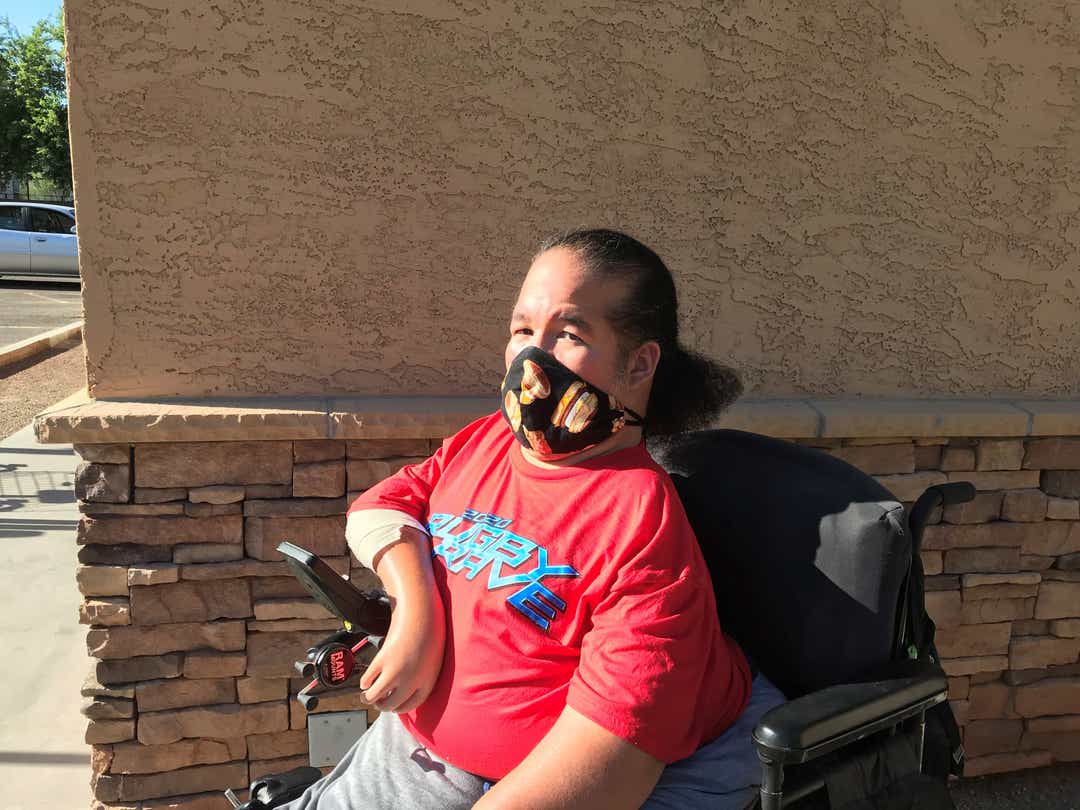
One of Jackson’s caregivers had a slight fever when she last came to work and tested positive for the virus on June 22.
Jackson hasn’t developed any symptoms but self-quarantined at home as a precaution.
It was a matter of time before he was exposed, he said.
While the staff at his job at Ability360, a nonprofit organization that advocates for independence for individuals with disabilities, took precautions to help curb the spread of the virus in the office, Jackson was afraid he could contract the virus in his own home.
Several caregivers go in and out each day to help him with bathing, grooming and meal prep. Each has other clients and families that they help take care of.
“I would jokingly-not-jokingly tell people that I can’t wait to catch this because it’s just a matter of time. Then it actually happened,” he said. “If I didn’t need the help I could easily avoid interacting with people, but that’s not possible.”
Over the last week, he attempted to get an antibody and COVID-19 test at various clinics but was unsuccessful. On Tuesday, he finally was able to get tested. It would take him more than a week to find out he was negative.
The uncertainty was not only nerve-racking, but it also made getting the daily care he needs more difficult.
“I’ve been scrambling to find somebody to help me out of bed and at the bare minimum help me use the bathroom,” he said. “It has been mentally and emotionally draining.”
He criticized state leaders for rushing to reopen businesses and lifting the stay-at-home order, which he said put him and others at risk.
“I understand wanting to help businesses stay open, I get that. But is it worth all the sickness that we’re facing now?”
Businesses
A day after the governor ordered gyms closed, members begin to enter Club Pilates Arrowhead in Glendale. “We’ve had a strange 24 hours,” said co-owner Chris Gage. “We weren’t sure we’d be open and now we are.”
Members were spaced 12 feet apart, rather than 6. They weren’t required to wear masks during the 45-minute class, but some did.
Earlier in the day, after being tipped off on social media with a complaint that the establishment was still open, a police officer showed up asking questions and taking notes. No warning was given.
“(Police) did say that we were within protocols and social distancing was within guidelines and they thought that was OK,” co-owner Lyndsey Bott said.
Arizona was one of the last states to close and one of the first to reopen during the pandemic. On March 19, after the number of cases in Arizona had more than doubled in two days, Ducey ordered bars, gyms and theaters to close and restricted restaurants to take-out only service. By mid-April, Arizona had lost an estimated 420,000 jobs. At the end of June, the prospect of shutting down for another 30 days just six weeks after they reopened had business owners wondering how, or if, they would survive.
…
At Botas El Potrillo, a Western wear shop, a customer brought her daughter in to buy a $53 pair of jeans. It was a rarity, owner Noe Rodriquez said.
He and his wife opened the store five years ago. Since the pandemic started, they’ve lost most of their business. The only thing keeping them afloat is the work boots and rubber-soled shoes they sell to construction workers, landscapers and people in the restaurant industry.
"It's something that stresses us out," he said. "But we try not to think about it a lot."
…
Mark Smith stood by the counter of Honey Bear’s BBQ in east Phoenix. During pre-pandemic times, the area would have a line that snaked behind diners seated on red vinyl stools and eating at high-top tables.
Instead, it was empty save for Smith and a driver for Postmates. Before COVID-19, the barbecue restaurant was not a place to dine and dash, but stay and linger. Business dried up in mid-March. Smith said there were days where he was lucky to clear $500.
Then came the push to support Black-owned business in the wake of unrest over police practices. “Honestly, it was some of the busiest days I’ve seen in my life,” he said.
…
In Scottsdale, Trevor Johnston was still taking reservations at his Old Town Scottsdale wine bar, when a customer came in and ordered a glass of wine.
Johnston and his girlfriend opened Wine Girl in May, and he says he’s staying open because he thinks his establishment sells enough food to get around Ducey’s order.
“We want to obviously be mindful of the situation going on and not pack people in here like some of these bars…which I think is a lot of the reason we are in the position that we are in,” Johnston said.
“We basically put every penny we had into this, not knowing that the world was going to fall apart,” he said. “There’s just not an option.”
…
Dressed in a red, white and blue tutu, a handmade apron and matching face mask, Carissa Gould was happily serving customers at her hot dog stand, Mama’s Dogs, on Tuesday afternoon.
Since the pandemic, she’s had to pivot from catering events to setting up shop on the streets.
“I’m a single mom, I’ve been doing this for eight years, and you learn how to just ride the wave,” Gould said. “Sometimes it’s really good, sometimes it’s bad.”
The upside is that she now has more time to spend with her kids.
“It’s like, we’re living in the middle of a pandemic but I’m super stress-free right now,” Gould said. “Probably the most stress-free I’ve ever been in my life, which is crazy because there’s so many unknowns.”
…
Salomae Schroeder awoke at 4:30 a.m. to begin her Tuesday, and by 5:30 she was out the door, heading for the award-winning neighborhood bakery she started four years ago.
The bakery she named My Gal Sal and saved money for nine years to open. The bakery she dreamed of when she was growing up in South Africa and couldn’t vote or eat in a restaurant because of the color of her skin. The bakery that is now hanging by a thread.
She watched Ducey’s briefing live and will obey the new rules, just as she obeyed the old ones.
“When COVID first started, I did everything I could to keep myself, my employees and my community safe,” she said.
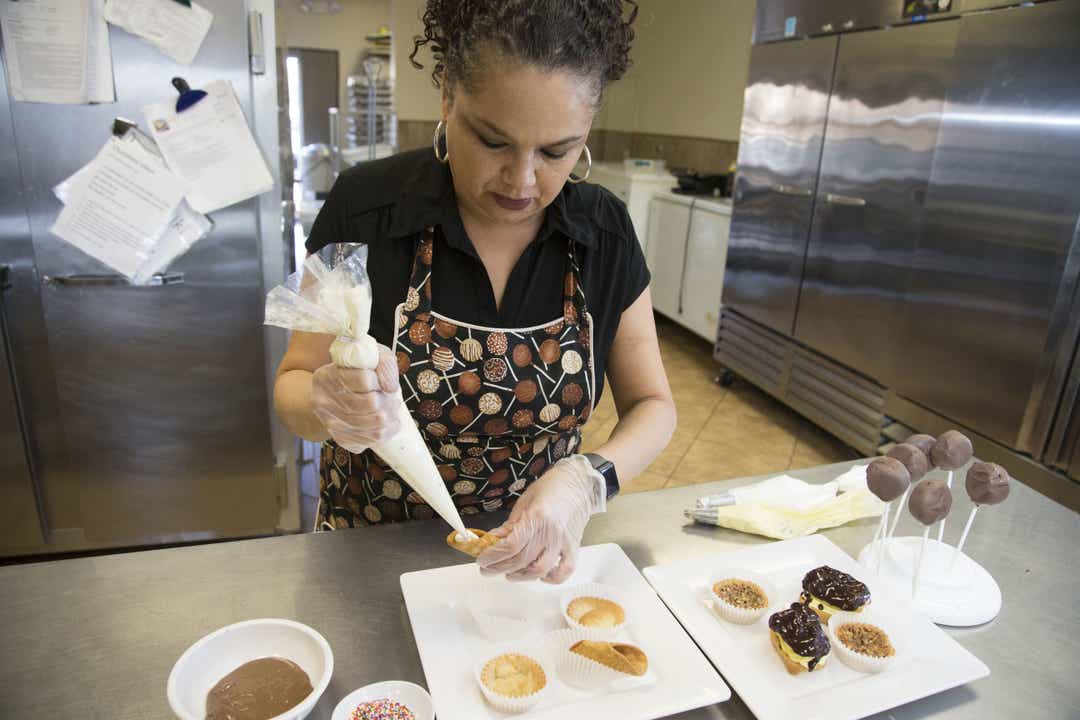
That included shutting down her business for a month and a half, even though Ducey’s order allowed restaurants to stay open for takeout.
“When I made that sacrifice, I had hoped our government at that time would have made a stay-at-home rule,” she said. “Yesterday’s announcement broke my heart. I feel like what I had done had been done in vain.”
When she reopened, she took out the tables in her small dining area because there wasn’t enough room for social distancing. She started curbside pickup, installed Plexiglas shields and printed disposable menus. She ritually sanitizes throughout the day, and she and her four employees go through 60 boxes of rubber gloves a week.
“There’s no dining room, so we’ve lost those sales,” she said. “My employees, who rely on tips, the tips are non-existent. When people pay over the phone with credit cards, the tips are gone, but my credit card fees are up because the credit card companies charge you more when you take an order over the phone.”
And because she offers baked goods that are allergen free, she cannot use meal-delivery services such as GrubHub or Uber Eats for fear of cross-contamination because they use the same delivery bags from restaurant to restaurant.
“With it being summertime, people are just not coming out,” she said. “Parents are having to stay home with their kids, and money’s tight. I can’t just raise my prices and pass along my expenses to my customers. I’m not in a fancy zip code.”
Schroeder said she became angry while watching Ducey’s briefing because the new rules seemed “wishy-washy.”
“How do you go on TV and announce that gyms have to close in five hours? I can see their frustration, but we’re way behind in what should have been done months ago,” she said.
She wonders how her native South Africa, which she regards as a Third World country, can be so far ahead of Arizona in terms of basic measures to control the virus, like mandatory mask orders.
The first few days after Maricopa County instituted its mandatory mask policy, she tried gentle reminders to customers who showed up without one.
“People were like, OMG, it’s my Constitutional rights," she said. "Then we decided to put a sign outside that a mask is required for entry, and the first day I counted 60 cars that pulled up and turned around. I had a decision to make. Do I lose 60 customers or do we just protect ourselves?”
She opted not to have her staff confront customers about masks.
“People are already unstable and tense and stressed out (over COVID-19),” she said. “If someone is very belligerent, if this guy has a gun, he could so easily shoot me now. I can’t afford to have my employees be the enforcers, so we just don’t say anything. “
All the stress has taken its toll. Several days ago, Schroeder’s husband, who is retired, found her crying at her computer.
“I might not be here at this time next year if this is how it’s going to be,” she said. “It breaks my heart, I saved up money for nine years to open up my bakery. This is my dream, and I realized today that I can lose all of this in a heartbeat.”
Victims
For the first time in weeks, Maria Jones stepped outside the Flagstaff apartment she shares with her mother, older brother and two younger sisters.
Still wearing an oxygen tank, she said she and her family had recently moved to Flagstaff from Leupp, which is about an hour's drive east on the Navajo Nation, to be closer to the Flagstaff Medical Center, where she, her mother and her brother work.
Shortly after they moved, all five members of the family contracted COVID-19.
"Being healthcare providers, we knew what the chances were," Jones said.
It started out as a headache for Jones, and turned into severe body aches and a fever that reached 104 degrees. She was coughing so hard she couldn't breathe and spent 17 days in the hospital.
"Being in the hospital, all I wanted was to come home," Jones said. "But then coming home, I'm scared to go to sleep because I'm not sure if I'll be able to breathe ... taking in everything that has happened, it's been a little rough, you know."
A doctor who works with COVID-19 patients said that when many are diagnosed, they react as if they've received a death sentence, but the fact is no one can predict yet what a patient's outcome will be. Some will emerge relatively unscathed while others will wind up with lifelong complications. And some, roughly 2% of the known cases in Arizona, will not recover at all.
…
On Tuesday, 29-year-old Cale Campbell woke up a bit earlier than normal, around 11 a.m.
By 2 p.m., he was lounging on the living room couch of his Paradise Valley home, where he spent two weeks sleeping upright to manage his symptoms.
The story of the pandemic is one of health care workers and hospitals, of essential businesses and essential employees, of fears and controversies. But of course, the real story of the pandemic is the people.
Campbell was on Day 31 of a COVID-19 battle. The good-natured guy with longish red hair and a matching beard is still feeling lethargic, still having headaches and body aches.
“I’ve seen better days,” he said via FaceTime. “Feeling pretty crappy. I guess it’s just the after effects. I just don’t feel great. I obviously feel way better than a couple weeks ago, but I still don’t feel great, not back to normal yet.”
Thankfully, it’s the summer, and he’s a high school history teacher, so he has time off to get plenty of rest. Campbell, wearing a gray T-shirt and a Diamondbacks hat, said he had mostly been playing video games, sleeping and napping.
Before he had the disease, he was jogging three miles a night. He’s a former college athlete who played football and threw javelin.
But he got so sick that, for weeks, he couldn’t even walk his lab-pit-bull mix, Marty. Now, he can take Marty around the neighborhood for about 20 minutes.
“Even if you don't end up as a death statistic, it's just miserable,” Campbell said. “I’m on 30 days, 31 days, of just feeling awful. And essentially 14 days was just absolutely the sickest I've been in my whole life, in 29 years.”
Campbell’s whole family – mom, dad and three adult sons – got the disease. They don’t know how. Campbell said he took staying home seriously and rarely left the house.
His family got together for a Sunday night dinner in May, and all five of them got sick. Two friends who came in contact with the family also got sick. They’re all recovered, with some symptoms lingering. His mom, who has an autoimmune disorder, ended up in the hospital for five days. Campbell went to the hospital himself once, when the shortness of breath became scary.
He got well-acquainted with his white-and-blue pulse oximeter, which he places on his finger to check his oxygen levels and pulse. He regularly checked his blood pressure at home, too, since he has hypertension.
For many of his friends, he was the first person they knew who got sick. He made it real for them.
His doctors believe he’s kicked the disease now.
“There's a relief that I got it and went through it already because I was terrified of the virus and for my family,” he said. “As much as it sucks, there was kind of a relief, a weight lifted off my shoulders. Like, I already lost the game.”
…
Around the same time that morning, in the shade of a ramada at a park in Miami, Christine Duarte leaned against a concrete picnic table filled with food bags and pulled up pictures on her phone.
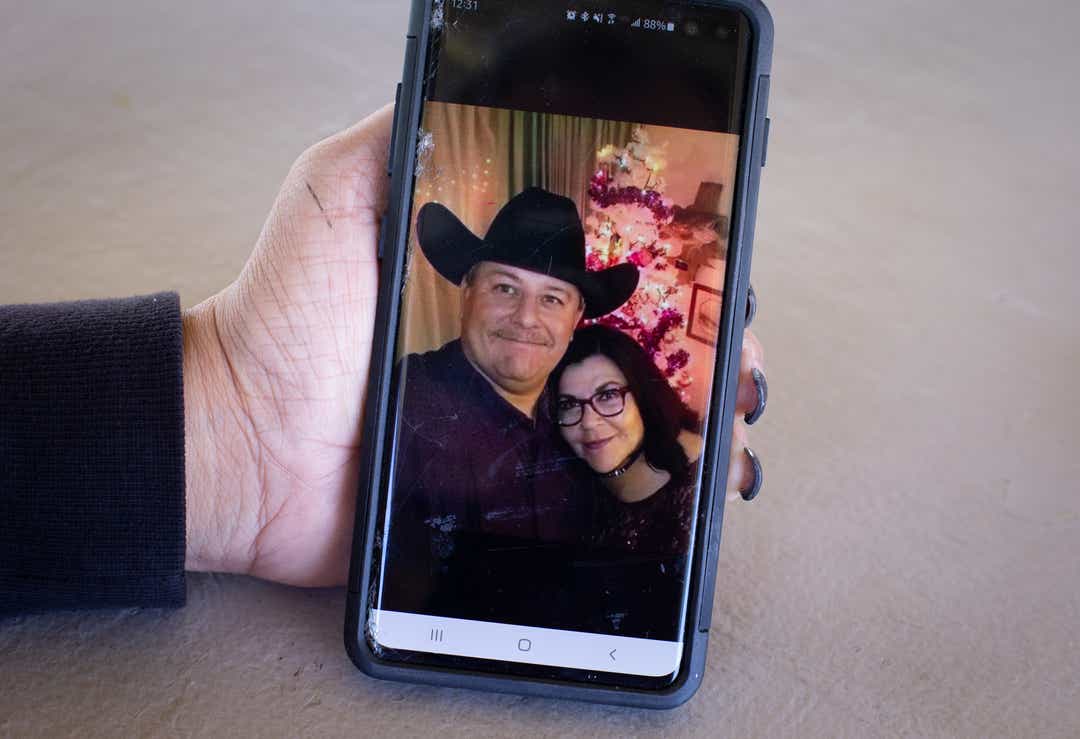
They showed a dark-haired woman with glasses and a sweet smile.
“She’s always smiling,” Duarte said, and then corrected herself, “She was always smiling.”
Her cousin Kim Chavez Lopez Byrd had COVID-19 and was in an intensive care unit on a ventilator at a Phoenix hospital for two weeks. She died on June 26.
The virus spread quickly through her family. Her husband, Jessie, was just released from the hospital. Her brother, Roy Chavez, a former mayor of Superior, is still in critical condition.
Byrd, who was 61, lived in nearby Superior and was a beloved first-grade teacher in the Hayden Winkelman Unified School District. She had a way of reaching even the most difficult students.
“She was a beautiful soul,” Duarte said. “The heart that Kim had was a heart of gold.”
She was always helping others.
She contracted the virus while teaching online summer school from a classroom with two other teachers. The teachers took precautions, wearing masks, staying apart, using their own computers and disinfecting their equipment. But all three got sick.
Byrd had three children, sons, John and Luke, and daughter, Marisa, and a granddaughter.
They are devastated, Duarte said, as is the community. For Duarte and many others, Byrd is the first person they’ve known to die of COVID-19.
“It hit hard,” Duarte said.
She blinked rapidly and stood up.
The first children were arriving to pick up the blue insulated food bags lined up behind her.
Today they contain macaroni and cheese, celery, an orange, pretzels, a granola bar, milk and juice.
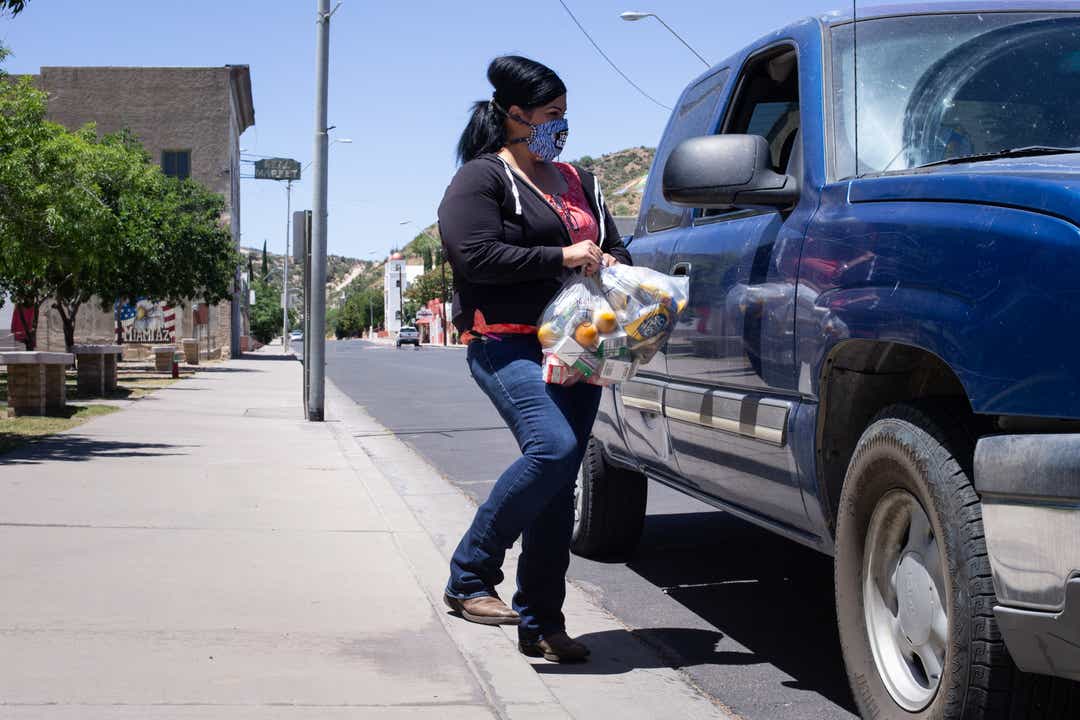
Duarte is a town director, overseeing economic development and community services. With schools closed because of the virus, children who counted on eating breakfast and lunch there were going without.
When the free meal program started in March, 35 kids signed up. By the end of June, they were feeding 184.
A month ago, there were 39 cases of COVID-19 in Gila County, which includes Miami. By the end of June, there were 309 cases, and six deaths.
Duarte is scared. Her mom, who’s 76, has cancer and is undergoing treatment. As hard as it is not to hug her, Duarte keeps her distance. She won’t take any chances.
It hasn’t stopped her and the six volunteers, including her daughters, Desiree, who’s 29, and Erica, 31, from giving out lunches. They wear masks and gloves and keep their distance.
After the distribution, three bags are left, and volunteer Sandy Cano offers to deliver them. “I’ll be here tomorrow,” she tells Duarte.
So will Duarte and the others, even if it means taking a chance.
Duarte thinks of her cousin. It’s what she would do.
Everyday life
At 9:30 a.m., Gregg Clymer pulled into the driving range and took off his face mask. He set his bag of clubs and bucket of golf balls down and warmed up a few dozen feet from the nearest person teeing off.
“The saving grace for my sanity was when they opened up the golf courses. That’s why I moved here – to play golf,” Clymer, 71, said.
Clymer, initially didn’t think COVID-19 was that serious. “I kind of thought it was going to be like the flu. I’ve changed my mind,” he said. “Up until a few weeks ago, I never knew someone who tested positive. Now I know six.”
Across the state, the people who were the real hope for stopping the virus were also its potential, or real, victims. Some were scared. Some were serene. But no walk of life was unaltered, in some way, by the pandemic.
By 10:30 a.m., Mark Openshaw, the head football coach at Globe High School was headed to his classroom on the third floor, where he teaches government and economics.
This time of year, Openshaw should be running football practice. His team had been scheduled to start practicing in June, but an assistant coach tested positive for the coronavirus the week before. The coach has recovered, but the district’s athletic director canceled practices.
“I can’t take the credit for being the wise Yoda, but it was the right decision,” Openshaw said.
It was a matter of keeping players safe. Playing football is risky enough without the challenge of trying to prevent the spread of the virus among the athletes.
“Football doesn’t matter when there are lives at stake,” Openshaw said.
…
Darlene Carchedi peeled off her lime green, flowered gloves and placed them on the bench beside her in the parking lot of Andre House, just southeast of the Arizona Capitol.
She’s always looking for gloves to navigate the sometimes-grimy living conditions she's endured living on the streets for almost six years. She’d tied a white bandana around her neck but never pulled it up over her mouth and nose, despite the handmade signs around the Andre House campus reminding visitors that masks were required at the facility.
After sleeping under tarps in the heat, she’s not afraid of the virus. “I’m not afraid much of anything,” she said with a smile. “For 54 years God’s taken care of me.”
But being homeless is already isolating. The measures to try to prevent coronavirus at places like Andre House have diminished the contact with people there.
“I’d like to get back to normal,” she said. “I miss my family here.”
…
Just after 1 p.m., in Sky Harbor International’s Terminal 4, Julia Wink stood by baggage carousel 7 waiting for her luggage from her flight from Los Angeles, a navy blue bandana tied around her face for a mask. It was the second time Wink had flown since the start of the pandemic.
“I was a little nervous being in the air. You could tell there was a vibe. Everyone was like anxious or maybe mad or wanted to get off the plane as fast as they could,” she said.
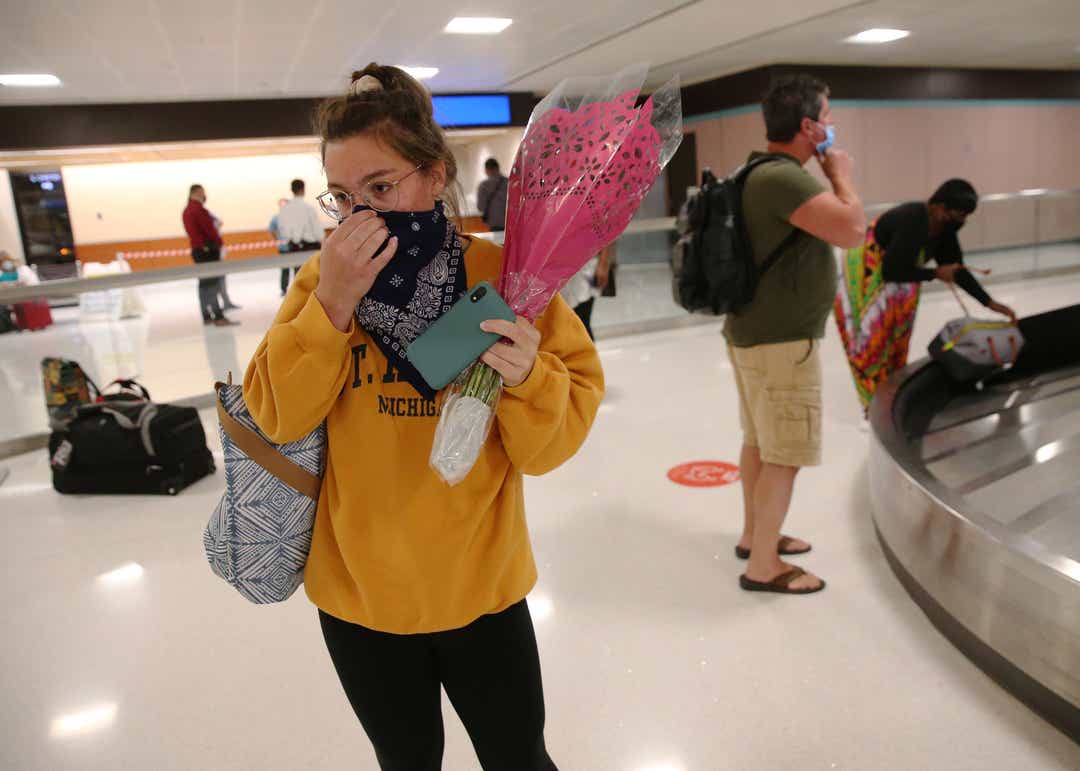
Her stop in Arizona was going to be brief, spending just one day with her sister before the two would eventually depart together on July 2 to their hometown of Chicago to visit their parents and other siblings while also handling some pressing family matters.
“If I didn’t have to travel I wouldn’t,” she said.
…
That afternoon, Cayden and Brittany Devito sat in their apartment, unsure what was going to happen.
By March, after a year of bouncing between hotels, the couple had found jobs, saved money and moved into a two-bedroom apartment in Tucson with enough yard space for Cayden’s two service dogs to run around.
“Then COVID happened, and it stopped everything,” Cayden said. The restaurant where Cayden worked laid him off. Brittany lost her warehouse job, then found another one that paid almost $500 less per month.
Then in June, their landlord filed for eviction. The couple tried working under Ducey’s eviction delay order, but couldn’t come up with the money they needed upfront.
“We just don’t know what to do anymore,” Cayden said.
…
Sixty-year-old Catalina Soto sat on a wooden bench outside a ranch house in Chandler speaking on a cell phone.
Soto’s oldest daughter, Aurora, 38, was calling from inside the Eloy Detention Center, where an outbreak of coronavirus has been raging for weeks, sickening detainees and correctional officers alike. On June 14, a 32-year senior officer died of possible COVID-19 related complications, and more than 200 detainees are currently ill.
Soto has been worried sick for her daughter, who was turned over to federal immigration authorities in January 2019 even though she has lived in the U.S. since she was 12 and has five children, all U.S. citizens.
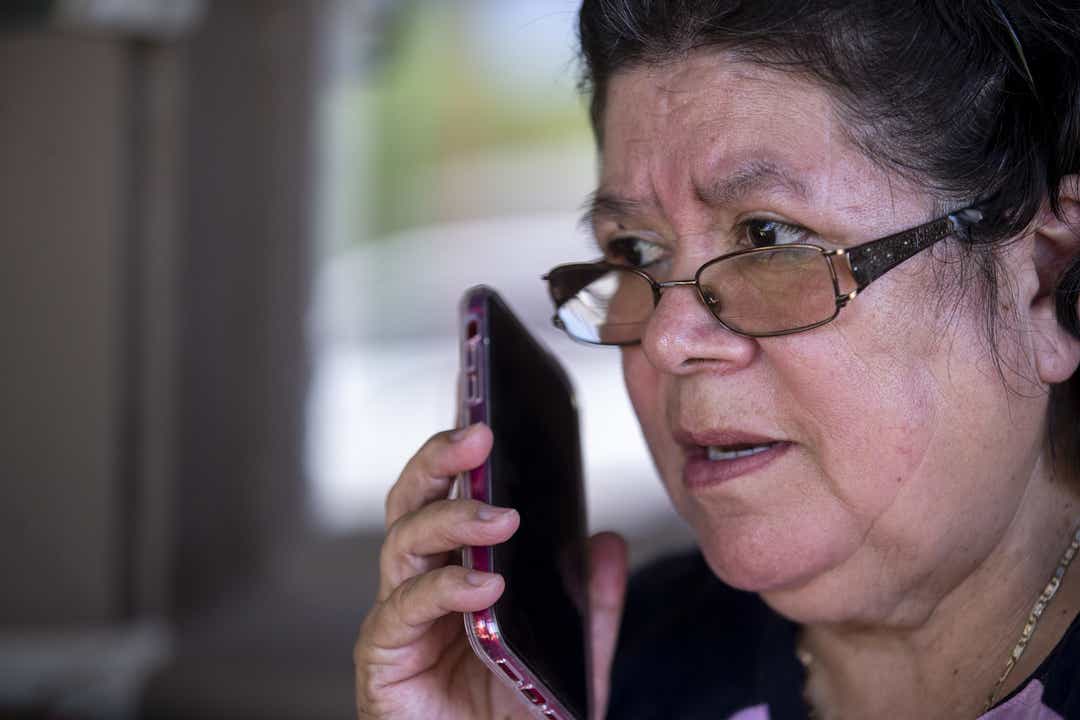
As the number of cases inside the facility began to spike in late May, Soto started receiving frantic calls daily from Aurora describing frightening conditions inside the detention center.
Her daughter said detainees were not being given bar soap or hand sanitizer. They received one 2-ounce bottle of shampoo for everything from washing hands to showering that had to last all week.
On the weekend before Ducey’s latest announcement, three women in her daughter’s pod had showed symptoms, including fevers, sore throats and headaches. On the day of the announcement, Aurora called to say she was being quarantined because of her exposure to the three women.
But on Tuesday, Aurora had good news. After eight days locked in her cell, her quarantine was over. She was feeling fine, but she still hadn’t been tested, despite being told she would be.
After she hung up, Soto struggled to choke back tears.
“I try to not let her know that I’m sad,” Soto said. “But sometimes it’s impossible. I just hope this is over soon.”
…
Tuesday started as it always does for Arizona State head football coach Herm Edwards. He arrived at Sun Devil Stadium at 4:30 a.m. for his usual one-hour workout, and by 7 a.m. he was at his desk, a detailed schedule for the day close at hand.
Between meetings, Edwards talked with prospective recruits, many of whom would likely be visiting campus if not for the pandemic.
No one knows if there will be a college football season, but the Sun Devils have to prepare as if there will be. The first wave of 27 players reported for conditioning work three weeks ago with more following each week. Each player is tested upon arrival back to campus and again each week. Coaches and personnel are also tested weekly. Edwards says he has not had anyone in the program test positive for COVID-19. So far, so good.
"Families have entrusted us with their sons and we're doing everything we can to protect them and make sure they are not in harm's way," he said the day before. "We want to play football but at the end of the day it's a game. There is a lot at stake here. We can't afford not to get it right."
…
A little before noon, three young men in neatly pressed slacks, white dress shirts and ties sat hip-to-hip on a small floral-patterned couch inside the Church of Jesus Christ of Latter-day Saints in Mesa.
Behind them a painting depicted Jesus Christ washing the feet of his disciples. The three crowded together to get in the frame of a smartphone to participate in a video chat.
Elder Reese Stoddard, 20, of Nampa, Idaho, was flanked by Elder Nathan Bohman, 20, and Elder Daniel Sumsion, 19, both of Utah.
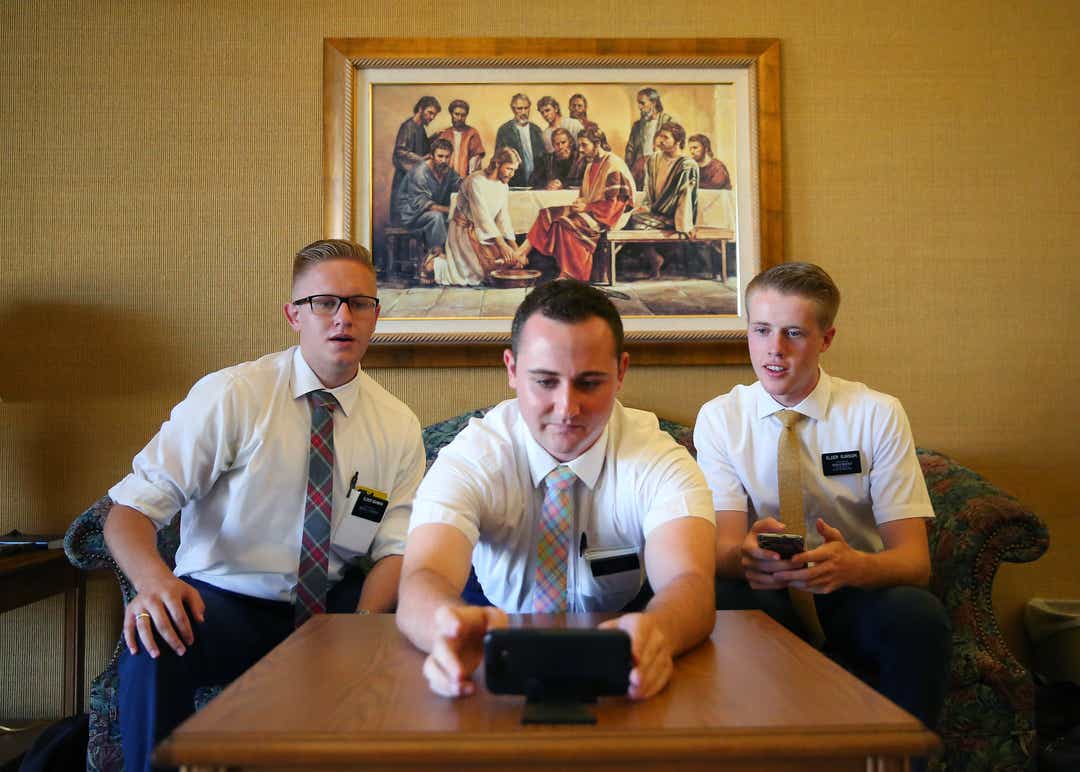
The woman on the other end of the call was in Honduras, where Stoddard was on a two-year mission in March when the global coronavirus pandemic struck and he was ordered first to quarantine for 14 days, then to return to the states.
Like many other missionaries, Stoddard was redeployed stateside to finish the remaining eight months of his mission.
“Whether I’m here, or whether I was there, the message that we bring is the same,” he said.
“We live in a world right now that is really changing, and it’s hard to find peace, but the message that we bring that we share about Jesus Christ brings us peace and hope.”
…
At 10 a.m., Carly Blodgett sat on her bed in her family’s home in Tempe, across from where her black teddy bear hamster Zelda – named after the novelist Zelda Fitzgerald – milled around her cage.
The room turned into her classroom this spring, as the state shuttered school buildings, plunging educators like Blodgett, a McClintock High School English teacher, and students into a system she calls “crisis learning.”
Blodgett, 27, last saw students in-person while on a retreat, just before the beginning of spring break in March, on a campground near the Mogollon Rim. The retreat was meant to be a chance for students to confide in educators about struggles with depression and anxiety.
On the last night of the retreat, Blodgett remembers sitting in a cabin with other teachers, talking about how the experience made her want to teach with more love and more positivity.
But Blodgett hasn’t had the chance to return to the classroom.
Instead, she talked to her students over Google Voice. The students sometimes called, she said, as they tried to grapple with the uncertainty of an interrupted school year, and the stress of missing the activities they loved. Band, drama, choir – all of it was gone.
“It was a collectively traumatic experience,” she said. “I had students reaching out to me over email just in distress.”
Blodgett has spent the last week feeling “whiplash” from announcements by state leaders over schools reopening. On June 24, Gov. Doug Ducey unveiled a plan offering millions of dollars in grants for schools to assist with pandemic needs.
But the plan came with strings: Schools would be required to hold in-person classes the same number of days per week as the previous year. School leaders have said they desperately need the money to keep budgets stable.
The plan would require districts like Blodgett’s, Tempe Union, to hold class in-person five days a week. For Blodgett and other educators, that would mean as many as 30 students in one classroom.
She’s not sure a busy classroom is safe this year.
“I enjoy teaching, I love teaching, and this is the hardest thing I've ever had to go through with teaching,” she said.
On June 29, Ducey ordered schools to push back the start date of in-person classes until at least Aug. 17.
“That gave me a little hope,” Blodgett said. “We'll have some more time to gather our bearings and figure out what we're going to do.”
Her concerns aren’t limited to crowded classrooms. She’s relieved the district will require students to wear face masks, but is worried that the mask’s status as a political symbol will drive some high school students, in the midst of developing their political ideologies, to buck the requirement.
“I don't want to get into a fight over masks,” she said. “It's nightmarish. I don't like to think about it. I want to be able to teach and keep students safe. And I just, I have trouble envisioning it right now.”
The day after
Even the vice president of the United States had the final day of June disrupted by the pandemic.
Vice President Mike Pence had originally been scheduled to visit Arizona for a campaign event, but his visit was delayed after several members of the Secret Service were diagnosed with COVID-19 after Trump's visit to Arizona the week before.
The next day, July 1, Ducey hosted Pence and Dr. Deborah Birx, one of the key members of Trump's COVID-19 task force for a short, sober visit.
On the day Pence arrived, Arizona reported a record single-day total of 4,878 new cases, pushing the state's total number past 84,000.
"Help is on the way and we're going to spare no expense to provide the kind of reinforcements that you will need across the state," Pence said.
Pence said he was expediting shipments of Remdesivir, a drug that has shown promise in the treatment of COVID-19 to Arizona and instructing the acting Homeland Security secretary to provide another 500 medical personnel to the state in response to Ducey's request for additional federal aid to help combat the virus.
During a socially distanced news conference at the Lincoln Ragsdale Executive Terminal at Sky Harbor International Airport, Pence also praised Ducey's handling of the virus.
And Ducey sounded very different from the governor who on May 12 had decreed that Arizona was "clearly on the other side of this pandemic."
“Our message is clear in terms of where Arizona is today," he said during the briefing with Pence. "You are safer at home. We want to slow the spread of this virus and protect the most vulnerable."
“If we commit to that and we do it with increased intensity over the next several weeks, we will be in a different position,” he said.
As they left the terminal after the briefing, both men wore masks.
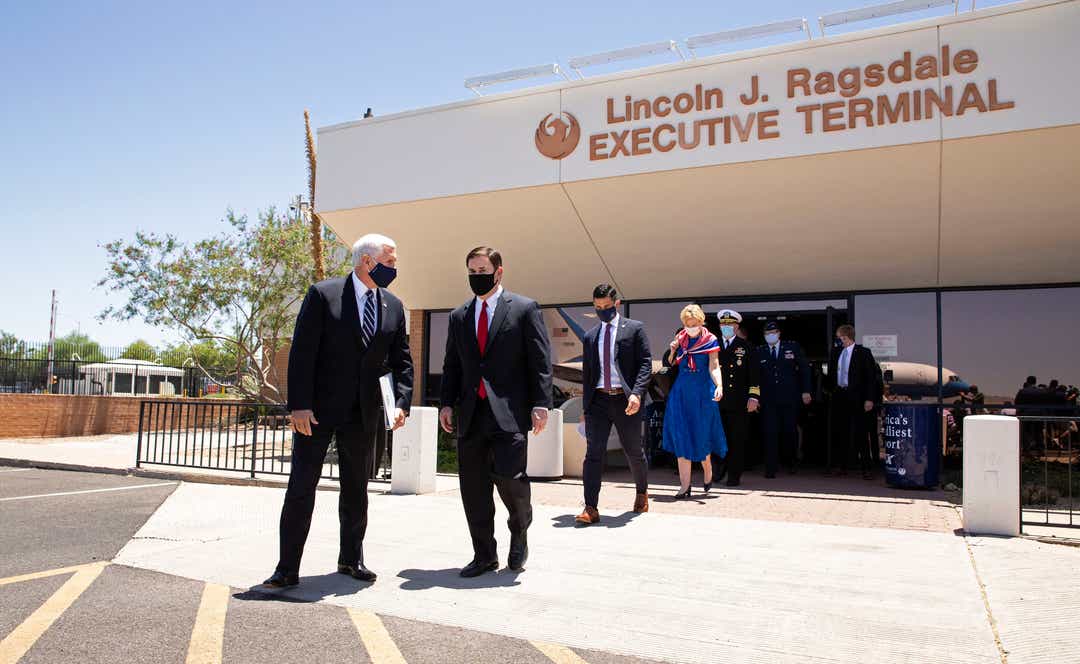
The Arizona Republic team
Writing: John D'Anna
Reporting: Lily Altavena, Karina Bland, Jessica Boehm, Joshua Bowling, Rafael Carranza, Lauren Castle, Emilly Davis, Jen Fifield, Uriel Garcia, Michelle Gardner, Daniel Gonzalez, Sasha Hupka, Stephanie Innes, Audrey Jensen, Rachel Leingang, Lorraine Longhi, Caitlin McGlade, Alana Minkler, Garrett Mitchell, Shaena Montanari, Richard Obert, Grace Oldham, Paulina Pineda, Maria Polletta, Ryan Randazzo, Richard Ruelas, Anne Ryman, Rebekah Sanders, Erin Stone, Helen Wieffering, Emily Wilder, and Melissa Yeager
Graphics: Pat Shannahan, John Paul McDonnall
Photojournalism: Michael Chow, Cheryl Evans, Thomas Hawthorne, Sean Logan, Nick Oza, Catherine Rafferty, Rob Schumacher, Justin Toumberlin, David Wallace
Presentation: Wendy Killeen, Leah Trinidad, John Paul McDonnall
tinyurlis.gdu.nuclck.ruulvis.netshrtco.de
مقالات مشابه
- سوراخ های مهاجرت به کاتالیزورها کمک می کند تا مولد باشند
- Dr. Anthony Fauci به شهادت به مجلس سنا در جلسه روز بازگشایی در میان coronavirus
- شرکت صادرات و واردات کالاهای مختلف از جمله کاشی و سرامیک و ارائه دهنده خدمات ترانزیت و بارگیری دریایی و ریلی و ترخیص کالا برای کشورهای مختلف از جمله روسیه و کشورهای حوزه cis و سایر نقاط جهان - بازرگانی علی قانعی
- فروش لوازم خانگی اورجینال در بانه - فروشگاه لوازم خانگی اورجینال شاپ
- گزارش: Mike Pompeo میزبانی مالیات دهندگان تامین می شود 'مدیسون شام' با جمهوری خواهان فاکس میزبان
- شرکت صادرات و واردات کالاهای مختلف از جمله کاشی و سرامیک و ارائه دهنده خدمات ترانزیت و بارگیری دریایی و ریلی و ترخیص کالا برای کشورهای مختلف از جمله روسیه و کشورهای حوزه cis و سایر نقاط جهان - بازرگانی علی قانعی
- : دئودورانت فروش قرار می گیرند با توجه به اجتماعی فاصله اما قفل شده است و مصرف کنندگان ارسال بستنی فروش, افزایش, می گوید Unilever
- عمل لیفت شقیقه چگونه انجام می شود؟
- در روز پدر, غول,' جو قاضی به یاد مرحوم خود را پدر
- "فوق بشر وحش' پت پرز نیروی محرکه در coronavirus کمک تلاش